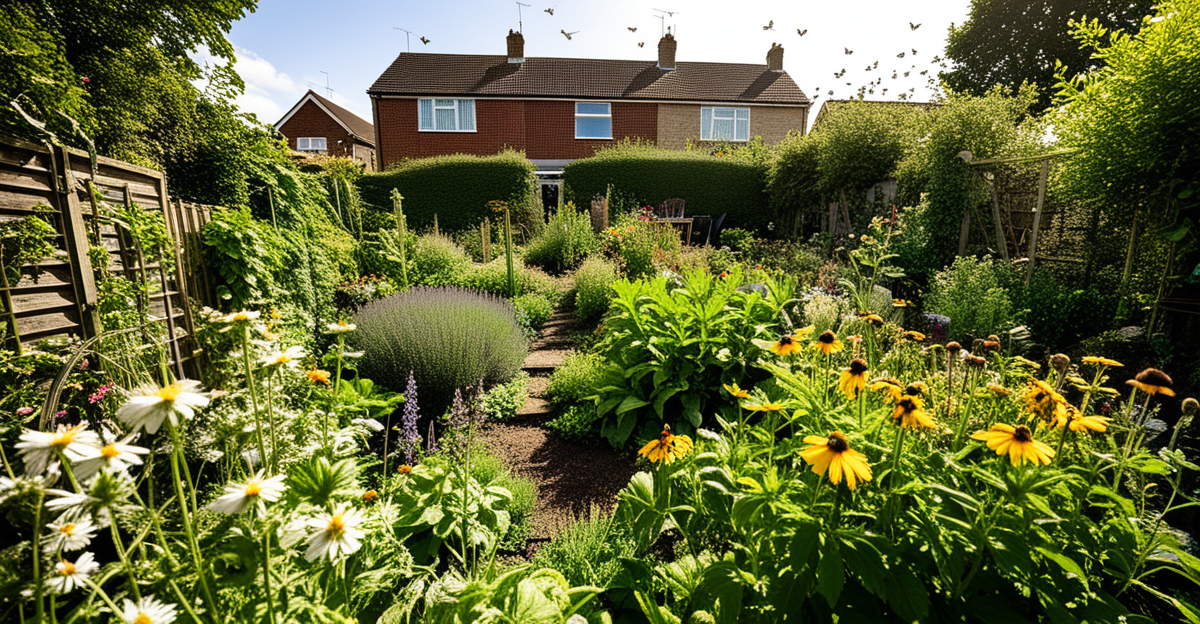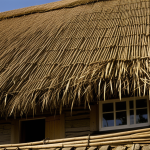Essential Steps to Attract Pollinators in Urban UK Gardens
Creating an urban pollinator garden involves strategic planning to maximize limited space while providing suitable habitats for bees and butterflies. To attract bees and butterflies effectively, start by selecting native and nectar-rich plants that flourish in UK city gardening conditions. Positioning these plants in sunny spots with shelter from strong winds enhances accessibility for pollinators.
Supporting local pollinator populations is crucial. Many urban environments lack natural habitats due to concrete landscapes, so introducing flowering plants helps maintain biodiversity and sustains critical pollinator species. Additionally, avoiding chemical pesticides ensures a safer environment for these insects, encouraging their ongoing presence.
Also to read : Building your backyard tiny home: the ultimate uk-friendly guide to legal construction and regulations
The biodiversity benefits of a well-designed urban pollinator garden extend beyond just insects. Increased pollinator activity improves plant health and yields, which in turn supports birds and small mammals. Incorporating diverse flowering species and varied plant heights mimics natural ecosystems, further enriching the urban garden’s ecological balance. This approach fosters a thriving microhabitat in even the smallest UK city gardening space.
Essential Steps to Attract Pollinators in Urban UK Gardens
Creating an urban pollinator garden in city settings demands thoughtful use of limited space to attract bees and butterflies effectively. To attract bees and butterflies, choose a diverse mix of native and nectar-rich plants adapted to UK city gardening conditions. Ensure these plants receive ample sunlight and are sheltered from strong winds, as pollinators prefer easy access to food sources in safe environments.
Also read : Elevate your uk country home: expert tips and inspiration for a chic and functional mudroom
Supporting local pollinator populations means more than planting flowers. It involves fostering habitats that cater to the lifecycle needs of pollinators, such as providing nesting sites or undisturbed soil patches for solitary bees. The absence of pesticides is critical in these urban spaces to maintain healthy insect populations.
The biodiversity benefits of an urban pollinator garden extend beyond individual insects. Robust pollinator activity enhances plant reproduction, which then supports a wider urban ecosystem including birds and small mammals. By blending varied planting heights and species, gardeners mimic natural habitats, creating ecological balance even in tight city gardens. This strategic approach ensures pollinators thrive, contributing to resilient urban biodiversity.
Essential Steps to Attract Pollinators in Urban UK Gardens
To establish a successful urban pollinator garden, it is crucial to create pollinator-friendly habitats within the spatial limits of UK city gardening. Utilizing every available niche—such as balconies, window boxes, and small patios—enhances the opportunity to attract bees and butterflies. Choosing plants that provide abundant nectar and pollen supports local pollinator populations and sustains their lifecycles.
Supporting local pollinator populations involves more than just planting flowers. Providing safe nesting spots, like bare soil patches for solitary bees or small bee hotels, encourages breeding and population growth. Additionally, reducing or eliminating pesticide use is essential to maintain healthy insect communities.
The biodiversity benefits of such gardens are significant. By fostering a mix of flowering plants and structural diversity, urban areas support not only pollinators but also birds and other wildlife, promoting ecosystem resilience. This multispecies support contributes to a balanced urban pollinator garden environment and maximizes the positive impact on local air quality and plant reproduction. Effective UK city gardening integrates these strategies to transform limited spaces into thriving ecological havens.
Essential Steps to Attract Pollinators in Urban UK Gardens
Crafting an urban pollinator garden starts with creating habitats that meet the specific needs of pollinators within constrained urban spaces. To attract bees and butterflies, it is vital to select plants that flower at different times, ensuring a continuous food supply. Positioning flowering plants in sunlit, sheltered areas encourages frequent visits by pollinators who seek warmth and protection.
Supporting local pollinator populations means going beyond planting. Providing nesting opportunities, such as bare soil patches or small bee hotels, caters to solitary bees whose presence boosts biodiversity. Minimising pesticide use is equally essential, as chemicals can deter or harm these beneficial insects.
The broader biodiversity benefits in UK city gardening include enhanced plant reproduction and resilient urban ecosystems. Pollinators improve fruit and seed sets, which support birds and small mammals. Adding varied plant heights and species fosters a microhabitat rich in resources, vital for sustaining pollinator communities. Through these steps, urban gardens evolve into thriving pockets of nature that both attract bees and butterflies and reinforce ecological balance.
Essential Steps to Attract Pollinators in Urban UK Gardens
Designing an urban pollinator garden in tight city spaces requires careful habitat creation that truly supports pollinators. Start by ensuring plants supply nectar and pollen throughout the growing season. A diverse plant selection helps attract bees and butterflies by providing a reliable food source that encourages repeat visits.
Supporting local pollinator populations means offering more than flowers. Including bare soil patches or small nesting boxes provides crucial breeding sites for solitary bees, whose numbers significantly boost urban biodiversity. These nesting opportunities complement floral resources, helping pollinators complete their lifecycles within your garden.
Avoiding pesticides is vital; chemicals can harm or repel pollinators, undermining ecosystem health. Natural pest control through companion planting and encouraging beneficial insects protects plants without endangering pollinators.
The biodiversity gains of an urban pollinator garden are substantial. Increased pollinator activity promotes plant reproduction and supports a wider range of wildlife, such as birds and small mammals, enriching the UK city gardening environment. By blending habitat features and plant diversity, urban gardens transform limited areas into vital hubs of ecological balance and resilience, benefiting both people and nature alike.
Essential Steps to Attract Pollinators in Urban UK Gardens
Creating an urban pollinator garden in UK city gardening requires maximising limited space while ensuring it meets pollinators’ crucial needs. Start by planting a diverse selection of nectar-rich flowers that bloom at varying times to provide continuous food for bees and butterflies throughout the season. Position these plants where they receive ample sunlight and shelter from strong winds, as these conditions increase accessibility for pollinators seeking warmth and protection.
Supporting local pollinator populations involves offering more than just food. Incorporate safe nesting habitats such as bare soil patches and small bee hotels. These features encourage solitary bees to breed and thrive, strengthening urban biodiversity. It’s also essential to avoid chemical pesticides, which can disrupt pollinator behaviour and health. Instead, promote natural pest control through companion planting and encouraging beneficial insects.
The biodiversity benefits from such a garden extend beyond insects. Robust pollinator activity enhances plant reproduction, which supports urban wildlife like birds and small mammals. Integrating varied plant heights and species diversity creates a richer urban ecosystem, turning even small garden spaces into vital pollinator havens in UK city gardening. This holistic approach helps attract bees and butterflies effectively and sustain their populations year after year.
Essential Steps to Attract Pollinators in Urban UK Gardens
Achieving an effective urban pollinator garden hinges on creating habitats that meet the diverse needs of pollinators within limited city spaces. To attract bees and butterflies, it’s important to select a variety of plants that bloom across seasons, providing continuous nectar and pollen sources that sustain these insects throughout their active periods. Positioning these plants strategically in sunny, sheltered areas of your UK city gardening space enhances access for pollinators seeking warmth and protection.
Supporting local pollinator populations involves more than planting flowers. Providing breeding sites such as bare soil patches or small bee hotels is vital to support the life cycles of solitary bees, which significantly contribute to urban biodiversity. Avoiding pesticides remains crucial, as chemicals can deter or harm pollinators, jeopardizing your garden’s ecological balance.
The biodiversity benefits of fostering such a garden extend well beyond pollinators. Enhanced pollination improves plant reproduction, which supports a broader urban ecosystem including birds and small mammals. Through a blend of diverse plants, nesting habitats, and thoughtful site selection, UK city gardening can transform even small urban spaces into flourishing urban pollinator gardens that sustainably attract bees and butterflies year after year.











